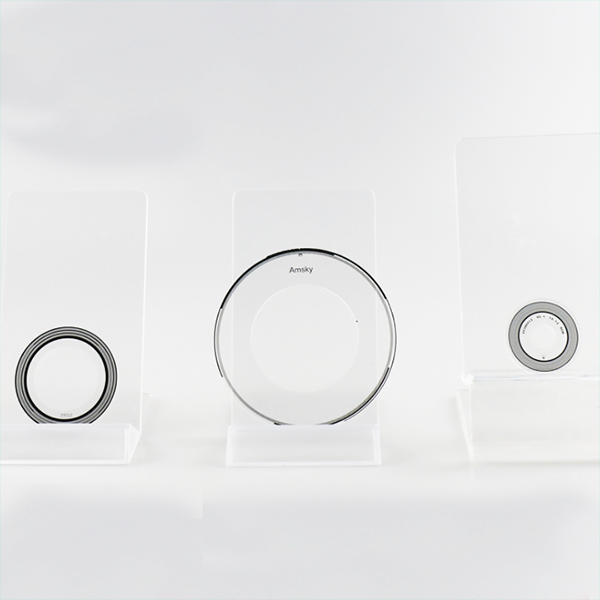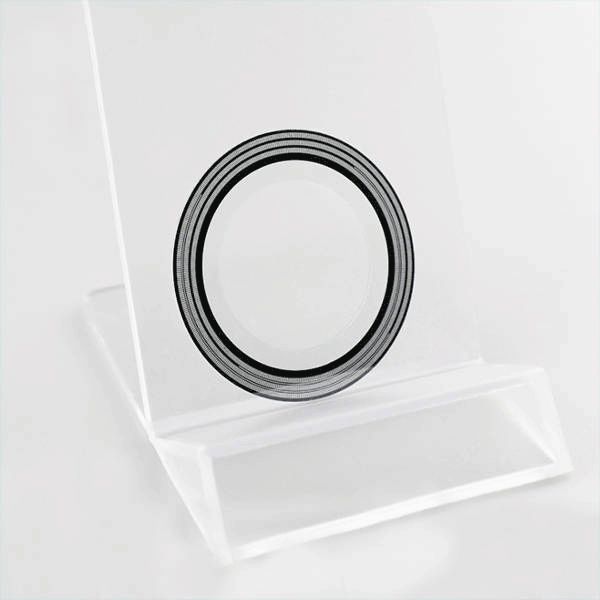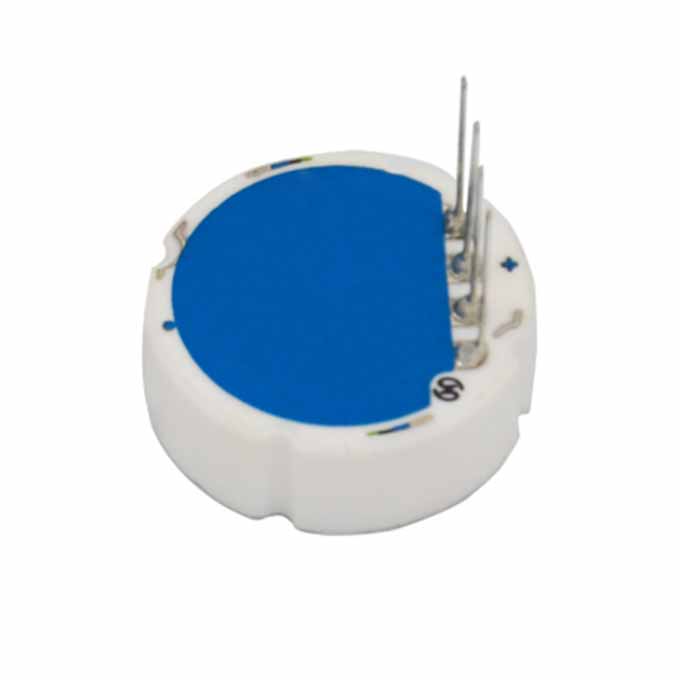Introduction of reflective grating strips and grating discs encoder disk grating ruler
Introduction of reflective grating strips and grating discs
English name: Reflective grating strips and grating discs
Field: Optics
Classification: Planar reflection grating and concave reflection grating
Attribute: Multi-slit part
Related terms: transmission grating

Introduction
A grating is a multi-slit component. The generation of the grating spectrum is the result of the combined action of multi-slit interference and single-slit diffraction. Multi-slit interference determines where the spectral lines appear, and single-slit diffraction determines the intensity distribution of the spectral lines. Gratings are divided into transmission gratings and reflection gratings, and reflection gratings are used more often. Reflection gratings can be further divided into plane reflection gratings (or blazed gratings) and concave reflection gratings (referred to as concave gratings).
Metal grating is to coat a layer of metal film on metal with high reflectivity, and engrave a series of parallel lines of equal width and equal distance on the mirror metal film. This kind of grating can reflect white light and disperse light. , called the reflection grating.
At present, the widely used plane reflection grating is formed by coating a layer of aluminum film on the glass blank, and then carving a very dense parallel groove on the aluminum film with diamond. At present, the plane reflection grating mass produced in my country has 600 or 1200 grooves per millimeter, and the densest one reaches 1800 per millimeter. Since the reflection coefficient of aluminum in the near-infrared region and the visible region is relatively large and almost constant, it is more important that its reflection coefficient in the ultraviolet region is larger than that of gold and silver; Therefore, aluminum is usually used for reflection gratings. By scribing an appropriate groove shape on the aluminum film, the energy of the light can be concentrated to a certain level, thus overcoming the disadvantage that the light intensity of the grating is not as good as that of the prism. In addition, there are various difficulties in manufacturing prisms that transmit infrared or ultraviolet rays, such as quartz has too little dispersion in the infrared region, salt is afraid of moisture, etc., while reflection gratings do not have these problems. Aluminium reflection gratings can be used almost in the infrared, visible and ultraviolet regions. Moreover, after a grating is engraved, it can be used to copy multiple blocks, and the copied good grating can be copied again, and the copying method is also simple. Because of these many advantages, in the spectroscopic instruments manufactured at present, almost all use reflection gratings instead of prisms.

Features of Planar Reflection Gratings
a) According to the grating equation, when the grating constant d is a constant value, for the composite light incident in the same direction (a constant), in the same-order spectrum (m constant), different wavelengths (with different diffraction angles β correspond to it, so Spectral lines (main maxima) of different wavelengths can be obtained in different diffraction directions. This is the dispersion principle of gratings.
b) For monochromatic light of a certain wavelength (, when the grating constant d and the incident angle α are fixed, for different orders m (m=0 ±1 ±2...), different angles of β can be obtained. Diffracted light, that is, the same wavelength can have different orders of spectral lines (main maximum).
c) For compound light, when m=0, in the direction of β=-α, the grating equation can be established at any wavelength, that is, in this direction, the grating acts like a mirror, which will not be The zero-order spectrum of the split light, where all wavelengths in the incident beam are superimposed in the zero-order spectrum. When d and α are fixed values, for spectra of different wavelengths and different orders, as long as their product m (equal to the above-mentioned fixed value, they can all appear in the direction of the same diffraction angle β.
For example, wavelength lines in the primary spectrum overlap with secondary, tertiary, and so on. This phenomenon is called overlapping of spectral orders. It is a disadvantage of grating spectroscopy, which is bad for spectral analysis and should be eliminated. In plane grating spectrometers, filters of different colors are often used to eliminate this order overlap. At the same time, in order to obtain sufficient light energy, in ICP spectral analysis, the spectral lines of the first order (m=1) or the second order (m=2) are usually selected.
Also known as Rolland grating. Its role is to both diffract and focus light. Therefore, the concave grating spectrograph only needs three parts: grating, slit and photosensitive plate. It can reduce the absorption phenomenon, only the light loss of one reflection of the grating surface exists, and there is no chromatic aberration. Can be used in far ultraviolet and far infrared spectral regions.
A series of parallel lines are carved on the concave surface of the highly reflective metal to form a reflection grating, which has the ability to split and gather light. If the slit light source and the concave grating are placed on the same circle, and the diameter of the circle is equal to the radius of curvature of the concave grating, a very sharp and thin spectral line can be obtained, which is called the Rowland circle as shown in Figure 5 (a). There are three types of common concave grating spectrometers, namely the Roland device, the Paschen device and the Eagle device.
The Roland device is shown in (b) in Figure 5. The center of the grating and the center of the photosensitive plate are fixed at both ends of the movable connecting rod. The length of the connecting rod is the radius of curvature of the grating, and its two ends can slide freely along the mutually perpendicular guide rails. The slit is fitted at the intersection of the guide rails. During the movement of the link, the slit, grating and photosensitive plate are always on a Rowland circle. The disadvantage of this device is that the spectrum of different wavelengths can only be read by moving the link.
The Roland circle of the Paschen device is a circular rail as shown in (c) in Figure 5. The slits and gratings are fixed on the rail, and the photosensitive plate surrounds the rail with a row of bottom brackets so that several sets of spectra can be captured at the same time. The advantage is that it is stable Sex is high.
The Eagle device is shown in (d) in Figure 5. Its incident angle is equal to the diffraction angle. The slit light source is installed directly above the base frame. To change the wavelength band, the grating and the base plate can be rotated by the same angle in opposite directions. The distance between them is always on the Roland circle. The advantage of this device is its compact size, which is usually used in vacuum ultraviolet spectrometers.

Reflection Gratings, High Precision Reflective Gratings, Planar Reflection Gratings, Concave Gratings,Linear scale , Rotary encoder disk
Optry Tech Co., Ltd. specializes in the development and production of photoelectric encodeing discs for more than 15 years. It can produce glass code discs, metal code discs, film code discs, photolithography high-precision code discs, etching Class code disc, can be customized according to drawings.
company culture:
Serving customers, being pragmatic and enterprising, operating with integrity, pioneering and innovating, people-oriented, and grateful for return.
Diligently working in the field of optical and optoelectronic components manufacturing, we are determined to become a leading and world-renowned supplier of optical and optoelectronic components in China through efficient management, top technology and equipment, and the joint efforts of all employees.
Specializing in the photoelectric encoder industry for many years, we provide professional etching processing, and can produce various materials according to customer requirements. The processing is precise and the appearance is beautiful. Welcome to drawings and samples to customize!
Optic Optoelectronics Technology Co., Ltd. is selected for the code disk, specializing in the development and manufacture of optical accessories. The components have many years of industry experience, strong technical strength, and guaranteed quality. It can be customized and processed according to the actual needs of customers. It is economical and economical. Welcome to consult.


